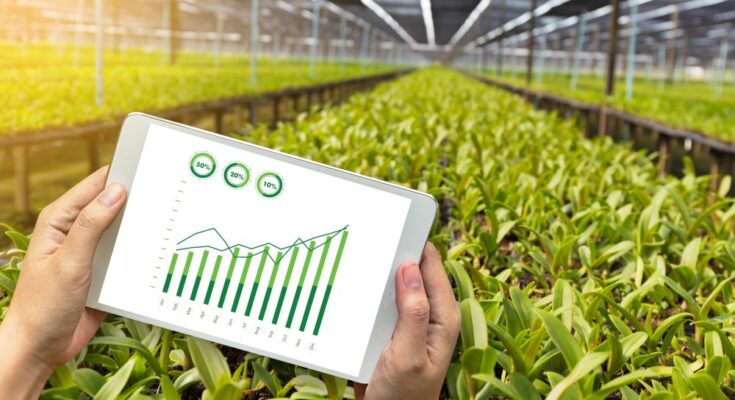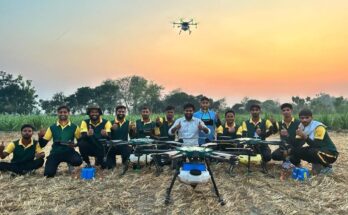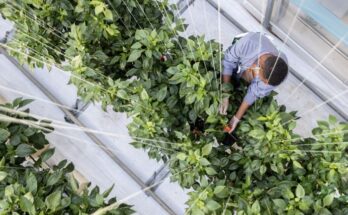The old adage- Knowledge is power is as true in today’s world as before. Today knowledge, including latest information and analysis is a requirement in all walks of life. Agriculture might not be the most organised sectors but is cannoned by multiple variables and challenges, that require support in informed prediction and decision making.
The ambiguous nature of the process makes information-based tools imperative for agriculture. On the other hand, development of such tools is most challenging. Most data driven tools are based on the historical data, patterns and future predictions, making them as good as their input information. The accuracy, depth and volume of the data used, determines the efficiency and utility of the digital tool that is developed. As per OECD data based- digital tools can be used by governments for implementing, evaluating compliance for existing policies and programmes and improving future programmes.
Farmers, scientists, research centres and governments have always been recording data relevant for their work, such as crops yields, water usage, fertiliser and pesticide applications, input costs, market prices and major weather events. Recently the concept of ‘Big Data’ has been put forward, that includes large data volumes, variability and multi-feature complexity. Digital tools like cloud computing systems and open-source software have improved risk management, modelling as well as benchmarking.
Digital tool usage
To name a few, digital tools and analytics are contributing towards efficient plant breeding with new variety development, crop selection, disease and pest prediction leading to yield predictions. Other platforms available on internet or mobile phones use weather data and imagery for precision or smart agriculture that can localise and reduce pesticide and fertiliser application and improve yield predictions. Data driven, contained and precise use of chemicals, not only improves farm profits but also sustainability. Such tools have not only been adopted in developed nations but also in developing countries like India, Kenya, Nigeria, Ghana and Niger with positive outcomes.
Data enabled digital tools offered by start-ups like Agribazaar, Crofarm and DeHaat are also providing market access, price information and are being used to buy and sell agricultural produce, therefore managing food supply and averting possible scarcity. The agri-finance sectors are also heavily dependent on data-based predictions. Similarly, tracking weather data and storage humidity details can help with real-time management of produce storage temperature, thereby avoiding foodgrain spoilage as well as early detection of microbes and other contaminants. Connectivity across various platform also allows for traceability of the produce through the value chain, this facilitates agribusiness and enhances consumer confidence. Digital tools are also being developed by USAID programmes for increasing connectivity amongst agricultural stakeholders and enhancing productivity in South Asia and Africa.
Data sources and analysis tools
As mentioned earlier, data predictions are limited by the amount and quality of data as well as the number of years and crop cycles of available data along with reasonable integration of all data sources. The robustness of predictions and associated price would decide the adoption by the farmers and other stakeholders.
There are multiple sources and tools available for data collections or generation. The data from farm can be collected by GPS and sensor enabled farm machinery, drones, robots and hand-held equipment for soil and water quality measurement. District or region-specific data can be collected by satellites and drones and when matched to the topography and weather data, it becomes a great resource for crop and variety selection. Further, Internet of Things (IoT), connects crop and yield data with various other components of agriculture like finance, market-demand and supply chain. The accuracy of current predictions also adds to the new data every season and help in fine tuning and upgrading the analytical approach. Such a feedback loop can be strengthened by adding and subtracting layers of complexity as per the goal of the intended prediction.
Accuracy and quality of various recorded parameters is as important as the next step of analysis and connecting variables. Tools like machine learning and artificial intelligence (AI) help mine data for not so apparent correlations as well as identify the blind spots in our assumptions. The availability of reliable comparators, conversion factors for comparing data from different sources and accurate information on physical factors like temperature, moisture and wind improve the efficiency of the analysis.
Data beyond the farm
Data and records driven applications that use farmer credit and land ownership information can also bring transparency in transactions and minimise risks by yield predictions for big or small holding farmers, insurance companies, loan agencies and banks. This clarity will also put forward multiple options like buying, renting, contracting and credit for farmers and companies dealing in seeds and farm machinery. Information driven transparency will strengthen farmer-supply chain and processing industry connections and consumer confidence in the long term.
Data based decisions at the farm level can improve resource utilisation and conservation practices. Similar efforts at regional level, tracking inputs per kilogram of produce or impact of production on natural resources can contribute towards long term policies for land and water conservation.
In conclusion, though immense research is ongoing in the fields of data generation and analytic tool development, the adoption and use of data enabled applications is fragmented and crop specific. Sector-wise adoption would require a stronger commitment from government, industry and other stakeholders towards innovation supported by policies, finance and infrastructure development. Also, the ability to reach masses in the remotest locations in the country at a very inexpensive cost is one of the most critical things if the adoption of data intensive tools is to become successful. The internet and mobile phone revolution in India are making this a reality. The internet data and mobile phone prices in India are one of the cheapest in the world and telecom companies have ensured that their network covers the entire country. The availability of digital applications in local languages has also ensured that technology has a deep outreach. The annotation of data at the back-end and efficient, evolving applications from developers at the front-end have built user confidence and significantly increased the chances of success of big data start-ups.
Data-based farming and supply chain management are the future of agriculture, especially with the involvement of youth and greater awareness regarding sustainability and food and nutritional security.
(Dr Ratna Kumria is the Director-Biotechnology at Alliance for Agri Innovation and Dr Shivendra Bajaj is the Executive Director at Federation of Seed Industry of India and Alliance for Agri Innovation. Views expressed in the article authors’ own.)




